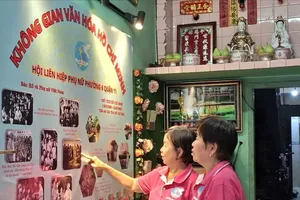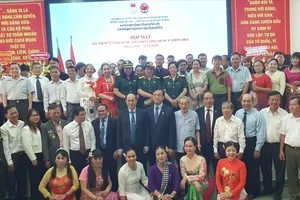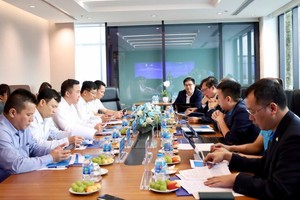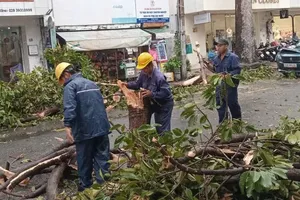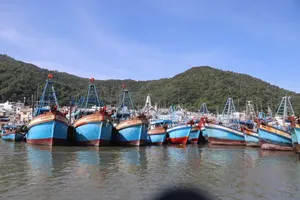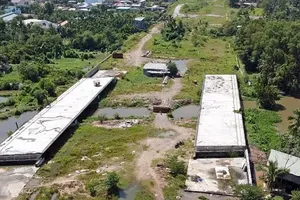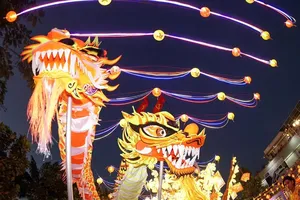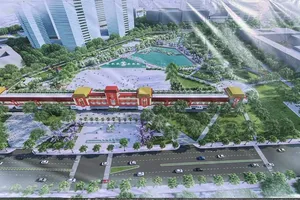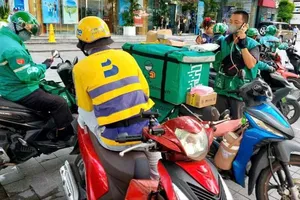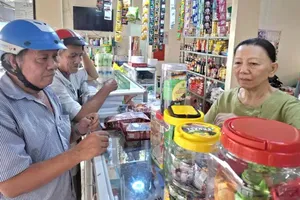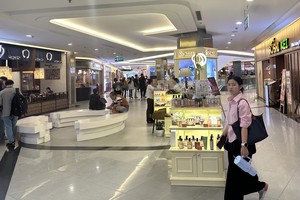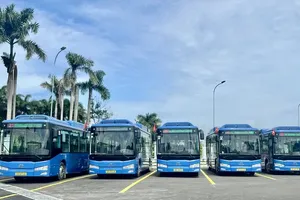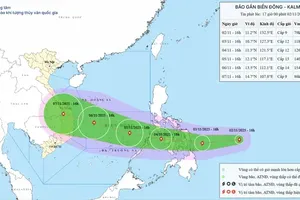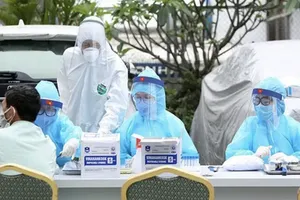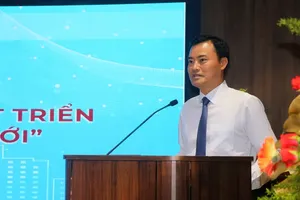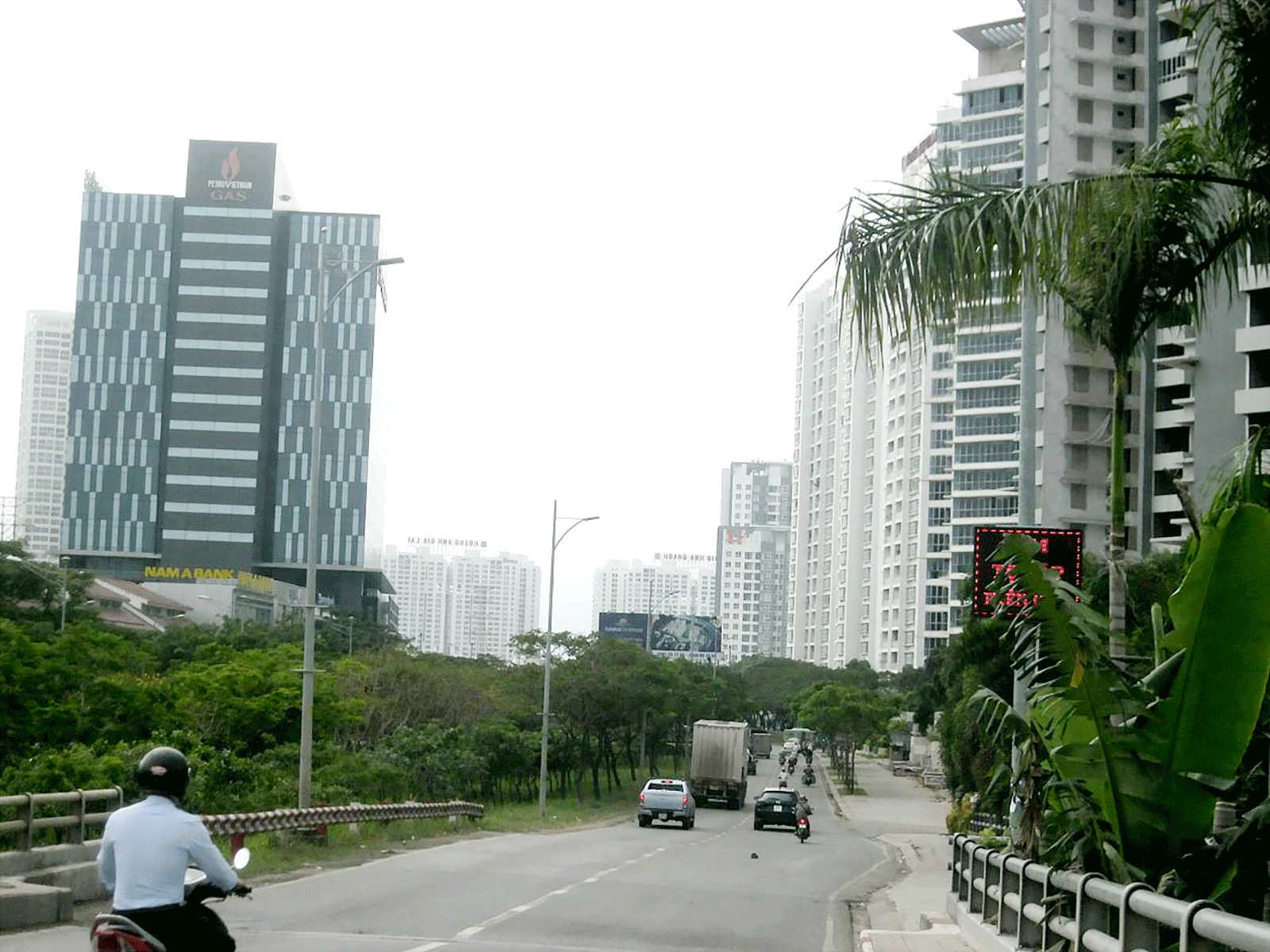
Hanoi Highway is the important entrance gateway in the east of the city. After many times of upgrading and expansion, the road now has 16 lanes but traffic jam has still occurred there during peak hours every day.
Also locating in the eastern gateway, Saigon Tunnel has been congested so traffic police has been forced to permit automobiles to travel into auto lanes to ease the issue sometimes.
Three kilometer long Nguyen Huu Canh street in Binh Thanh district, linking up Saigon Bridge to Ton Duc Thang street, has become a “hot spot” of traffic jam. The street is home to large building projects together with many schools, hospitals and crowded residential areas.
In the southern entrance gateway, Nguyen Huu Tho street, linking up District 7 and Nha Be district, has not been invested appropriately. Experts said that planning along the street showed many limitations, likely to be outdated in the near future.
Projects have been licensed too close to the road edge. According to Sai Gon Giai Phong Newspaper, tens of apartment blocks with about 1000,000 apartments have sprouted along the street. Some projects built very close to the street such as The Park, The Park Vista, HAGL and Phu Long.
In District 4, Ben Van Don street is about two kilometer long but has up to 12 buildings, apartment blocks and commercial centers with thousands of apartments.
Nearby Hoang Dieu street also has tens of apartment blocks having come into operation.
Similarly, less than two kilometer long Pho Quang street in Tan Binh district has been badly congested during rush hours. The street is home to tens of buildings which have been built or under construction.
Traffic gridlock has been a problem in the western gateway from Cu Chi district to the center area of HCMC although there are not many buildings there like in the east and the south. It is blamed for fast urbanization in suburban districts and quick immigrant increase causing infrastructure overloading.
City to tighten licensing
Most experts said that traffic jam in city entrance gateways has been because infrastructure is asynchronous with population increase. Too many buildings have been constructed while infrastructure has been developed too slowly putting heavy pressure on traffic system and overloading many streets.
Infrastructure overloading and rampant licensing of buildings have been debated at sessions of HCMC People’s Council but no team or individual has taken responsibility for the issue.
Plans permit construction of 30 storey building with the condition that the road in that area must be expanded to 30 meters instead of only 10 meters. However it is not sure that the road will be broadened in the next 10-20 years but the buildings have kept being built, overloading the road, an expert analyzed.
That means infrastructure has run after buildings construction. Vietnam has not had schemes to implement plans. In developed nations, the schemes will calculate infrastructure, road expansion and population density every year and in each development phase. Authorized agencies will base on the plans to license construction works in accordance with plans, the expert said.
Recently chairman of HCMC People’s Committee Nguyen Thanh Phong said that the city would not license buildings in crowded streets and areas where traffic infrastructure has not been improved according to plans.
The Department of Planning and Architecture has reviewed areas where buildings should be limited to give relevant construction norms. During this time, all projects which the Department of Construction has licensed must be transferred to Planning and Architecture and Transport Departments to estimate traffic impacts.
Licensing buildings will conducted by a group of experts from the Construction Department and relevant agencies. They will estimate impacts on traffic and environment carefully before making decisions.
